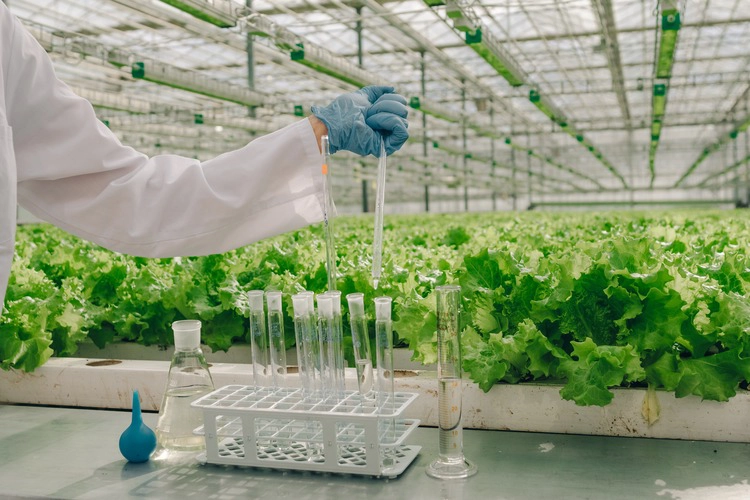
High humidity – set to rise with climate change – coupled with presence of common plant disease are likely to increase risk of salmonella
By
Every year, 1.2 million people are infected with Salmonella enterica – mostly via contaminated fresh produce – a number that is set to rise due to climate change. In a new study published in Applied and Environmental Microbiology, researchers have found that Salmonella exploits changes to plant environments – including high humidity – allowing it to survive for longer on agricultural crops and in the soil.
The study used lettuce infected with the common phytopathogen – a type of plant disease – bacterial leaf spot (caused by Xanthomonas hortorum pv. Vitians). According to researchers, the global impact caused by phytopathogens, including X. vitians, is likely to increase with climate change.
Experiments were conducted to understand how the presence of Salmonella would change in these plants depending on humidity. The experiments varied the days when plants were infected with X. Vitians and when S. enterica arrived in a water droplet on the leaf to mimic arrival via irrigation or splash dispersal from the ground.
The study found that bacterial leaf spot did promote Salmonella survival, and internalisation within romaine lettuce. This internalisation is what causes Salmonella infection when humans then eat these foodstuffs – as the bacteria is safe from solar UV exposure or post-harvest sanitisation treatments.
However, the survival of Salmonella does depend on the specific timing of when it is introduced to the plant: too early, and plant defence mechanisms will inhabit Salmonella growth. Too late, and the plant will have succumbed to bacterial leaf spot, and this will also limit Salmonella‘s ability to survive.
High humidity, and the water-soaking symptom of bacterial leaf spot also enhance Salmonella‘s ability for rapid growth within infected lettuces. Between 1973 and 2002, the global mean of maximum daily wet bulb temperature – a measure of humidity – increased by around 0.2C each decade. And with humid conditions set to rise even more across the world, researchers believe that the risk of contracting salmonella will also increase.
‘It’s not surprising that a host is altered by disease. What’s interesting is how these changes affect other members of the bacteria community, in addition to the pathogen causing the disease,’ said corresponding study author Jeri Barak, a professor in the Department of Plant Pathology, University of Wisconsin-Madison.
‘Furthermore, the impact of increased humidity on healthy plants also supported Salmonella‘s survival on plants, which would make climate change a food safety issue,’ Barak continued.




